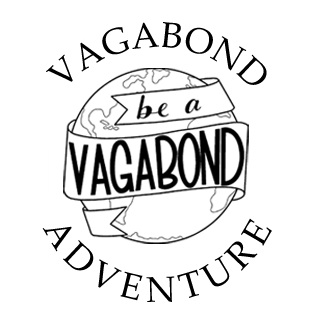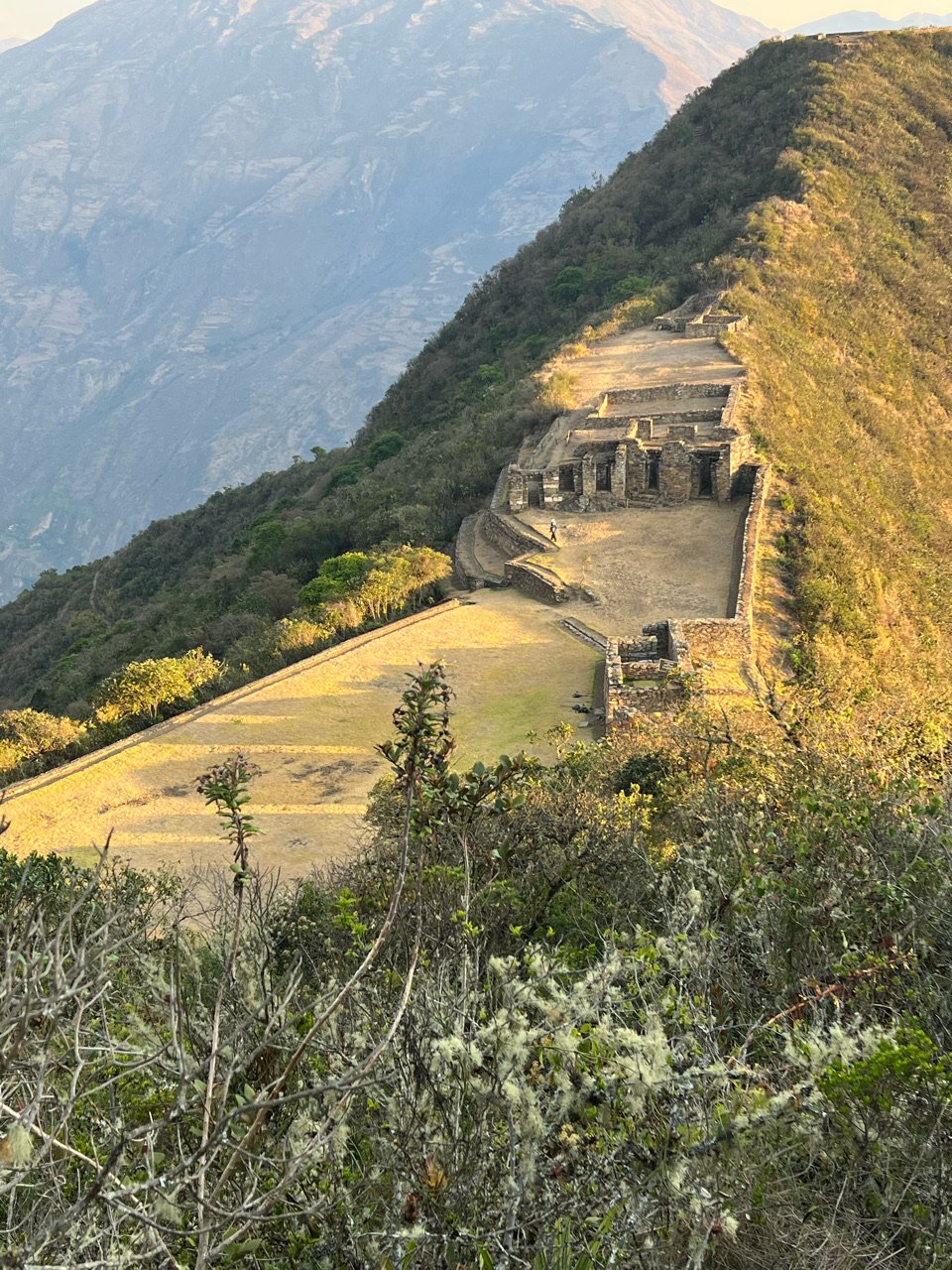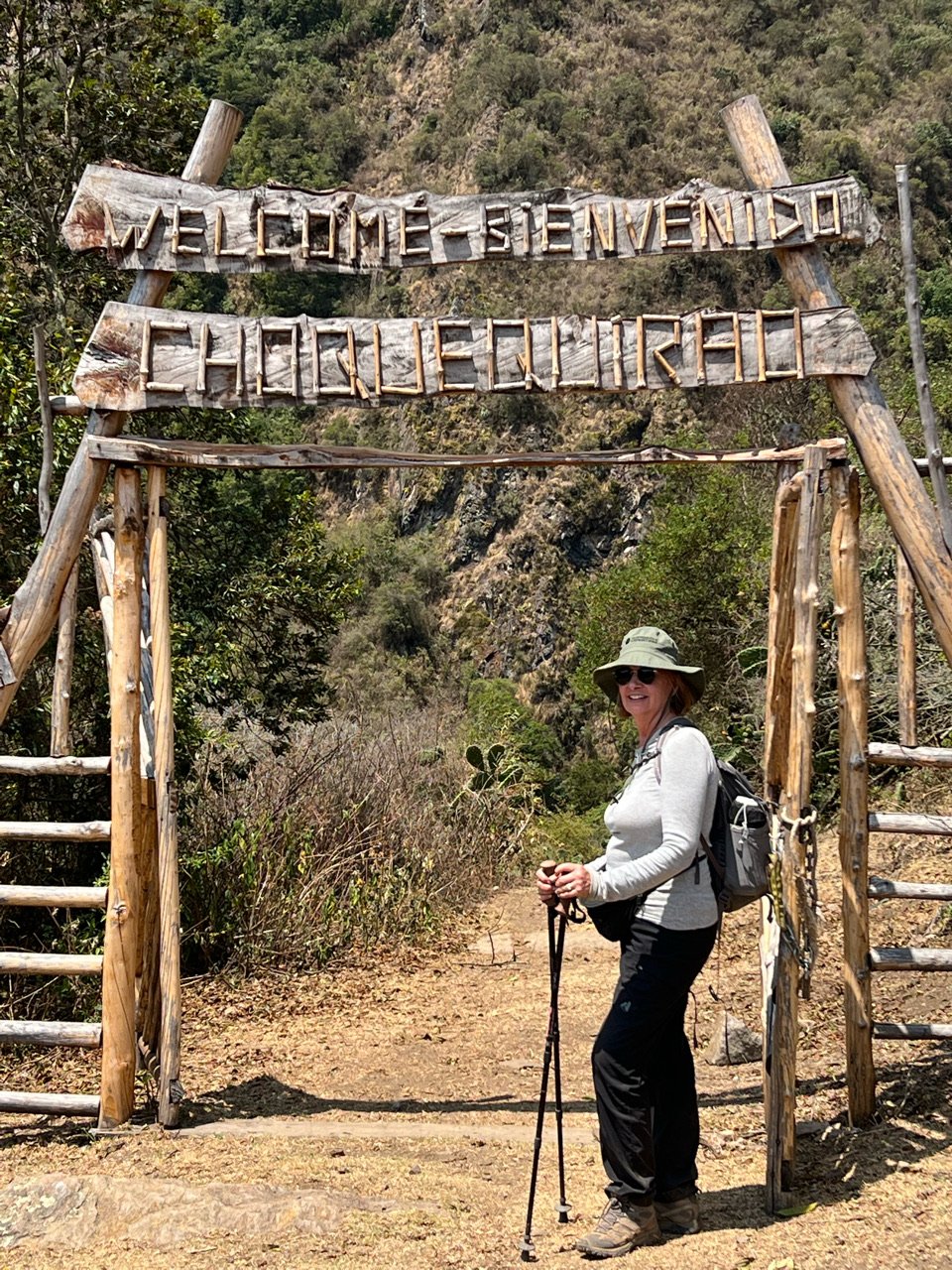Day 400 - Arriving at Choquequirao
Chiquiska Campsite
Day 2 on the trek to Choquequirao: big day because we will actually reach the sacred city. We hope. That’s the mountain we will climb, the big one with the on top. (I’m still working on the proper names of all the mountains. There no shortage of them.) Choquequirao is near the top in the crevice to the left, just below the clouds. We had some breakfast with Mariano our cook and Renato, the owner of CuscoNative.com-highly recommended, mention my name), and then started down those rocks and finally made the Rio Apurimac. I wondered if we’d ever get there. Once there we took a breath to enjoy the surroundings and the roar of the river. Not many human beings to be found here. Then we began the roughly 6500 foot vertical ascent to the citadel.
Maranpata Village
We stopped only briefly in this tiny village for a short break before hiking two more hours to reach Choquequirao. The view was breathtaking and the two-year- girl I kidded around with was precious. Giggling is the universal language. Walter who helped Us with mules thought she was hilarious.
Choquequirao Incan City
We explored Choquequirao for a couple of ours and that wasn’t enough. It was one of the main reasons we were in Peru. Millions of people visit Mach Picchu, but only a handful visit Choquequirao. That was why we wanted to see it. When we arrived, only five people were in the complex: Renato, our guide, me and Cyn, a hiker from Norway and the complex’s Peruvian guard.
It’s difficult to know the purpose of this sprawling complex, but it was an important place, 7 square miles of temples, apartments, palace grounds, fountains, offices, terraces, gardens, granaries, plazas and ritual areas of unknown purpose. We walked from the main plaza to the top of a high hill that was manually leveled and shaped in a perfect circle. At the outer edge it’s windy. It at the center it is absolutely silent. No one knows the exact purpose of this plaza but while we were there we spotted (and I was able to video) two condors. Condors were extremely Important to the Inca, along with the Puma and Snake. It represented intelligence, wisdom and logic. From here I witnessed stunning views of the mountains all around and the Rio Blanco river far below. Exhausted but amazed, we headed to our camp near the site’s terraces below for a good night’s sleep.
These are just a handful of the photos I took once we arrived late afternoon to see this ancient and remote city. That’s Cyn at the entrance. The complexity and intelligence of the Incan workmanship and architecture are incomparable. What a remarkable civilization. Yet the Spanish destroyed it, and many of its immense scientific and technological advancements, all in the space of 4 decades. They sought nothing but gold and silver and imposed Catholicism, but could have benefited so much more simply by cooperating and learning. What a terrible loss. Still we have magnificent clues like this city.
Recommendations
If you’re making the trip to Peru, consider these recommendations to make the most of your adventure.
























“Occupying a whole block and guarded by imposing high walls, it is one of the most fascinating religious buildings in Peru. Nor is it just a religious building – the 20,000-sq-meter complex is almost a citadel within the city. It was founded in 1580 by a rich widow, doña María de Guzmán.”